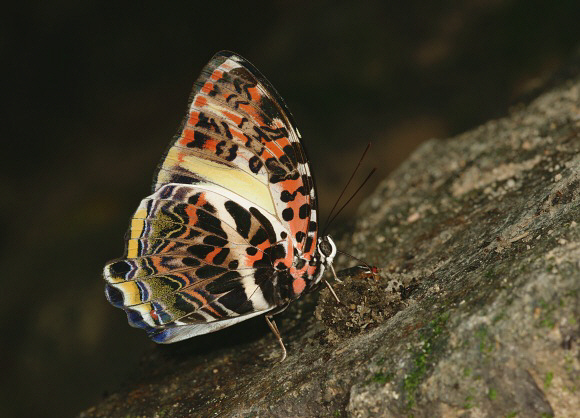
Introduction
This large and magnificent butterfly is the only member of the genus Agatasa. It occurs as a rarity in India, Myanmar, Thailand, Laos, West Malaysia, Sumatra, Borneo and the Philippines.
The legendary explorer and naturalist Alfred Russell Wallace, in his book The Malay Archipelago, wrote of its capture at Malacca :
“I was one afternoon walking along a favourite road through the forest, with my gun, when I saw a butterfly on the ground. It was large, handsome and quite new to me, and I got close to it before it flew away. I then observed that it had been settling on the dung of some carnivorous animal.”
“Thinking that it might return to the same spot, I next day after breakfast took my net, and as I approached the place was delighted to see the same butterfly sitting on the same piece of dung, and succeeded in capturing it. It was an entirely new species of great beauty. I never saw another specimen of it, and it was only after 12 years had elapsed that a second individual reached this country ( England ) from the north-western part of Borneo.”
d’Abrera, in Butterflies of the Oriental Region wrote :
“It is truly a spectacular sight, but it’s feeding habits would be regarded by some as being gravely socially aberrant, to say the least ! A famous zoo-geographer friend tells that while on the Mt Mulu expedition in Borneo, he was not even permitted to finish his toilet in the jungle with dignity. For while he was thus crouched ( having the previous day dined on spiced pork ), a strongly flapping Agatasa calydonia arrived to take boisterous possession of the freshly malodorous deposit.”
Habitats
The butterfly is said by Corbet & Pendlebury to occur in open forest at low to moderate elevations. I have only ever seen 2 specimens, one in the disturbed primary rainforest at Poring hot springs in Sabah, Borneo; and the other in similar habitat at Ulu Gerok in the western slopes of the hills in peninsular Malaysia. On both occasions the butterflies were males, feeding at carrion, close to waterfalls in dark shady forest.
Lifecycle
The lifecycle is unknown.
Adult behaviour
The butterfly is very scarce and only ever seen singly. Males are normally only seen when feeding at carrion, dung or rotting fruit. Once settled the butterfly is easy to approach and oblivious to the presence of photographers!
